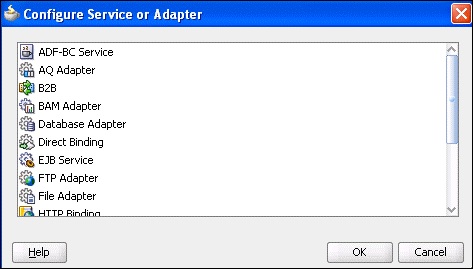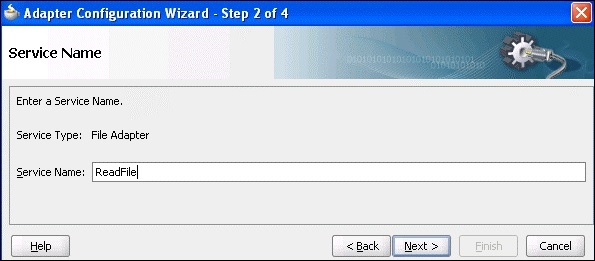
- BPEL - Home
- BPEL - Introduction
- BPEL - Activities
- Partner Link in BPEL Process
- Creating a Partner Link
- BPEL - Adapters
- Process Monitors
- One-Way Messages
- Synchronous Interactions
- Asynchronous Interactions
- Asynchronous Interactions with a Timeout
- Asynchronous Interactions with a Notification Timer
- One Request, Multiple Responses
- One Request, One of Two Possible Responses
- One Request, a Mandatory Response, & an Optional Response
- Partial Processing
- Multiple Application Interactions
- Invoking a Synchronous Web Service
- Invoking an Asynchronous Web Service
- Using Parallel Flow
- Using Conditional Branching
- Using Fault Handling
- Resubmitting a Faulted Process
- Incorporating Java & Java EE Code
- Manipulating XML Data
- Using Correlation Sets & Message Aggregation
- Using Events & Timeouts in BPEL Processes
- Using the Notification Service
- Using Oracle BPEL Process Manager Sensors
- Difference between BPEL 1.1 & BPEL 2.0
BPEL - Adapters
Adapters enable to integrate the BPEL process service component with access to file systems, FTP servers, database tables, database queues, sockets, Java Message Services (JMS), MQ, and Oracle E-Business Suite. This wizard enables to configure the types of adapters shown in below figure for use with the BPEL process service component −
Adapter Types
The following image shows the different adapter types −

Advanced Queuing (AQ)
For interaction with a queue. AQ provides a flexible mechanism for bidirectional, asynchronous communication between participating applications.
Oracle Business Activity Monitoring (BAM)
For publishing data to data objects in an Oracle BAM Server.
Database
For interaction with Oracle and non-Oracle databases through JDBC and Oracle Business Intelligence (which is a special data source type).
FTP and File
For file exchange (read and write) on local file systems and remote file systems (through use of the file transfer protocol (FTP)).
Java Messaging Service (JMS)
For interaction with JMS. The JMS architecture uses a one client interface to many messaging servers architecture.
Message Queue (MQ)
For message exchange with WebSphere MQ queuing systems.
Oracle Applications
For interaction with Oracle Application's set of integrated business applications.
Oracle B2B
For browsing B2B metadata in the metadata service (MDS) repository and selecting document definitions.
Sockets
For modeling standard or nonstandard protocols for communication over TCP/IP sockets.
Adapter Service Name
The Service Name window prompts to enter a name, when the adapter type is selected from the pallet. For this example, File Adapter was selected. When the wizard completes, a WSDL file by this service name appears in the Application Navigator for the BPEL process service component (for this example, named ReadFile.wsdl). The service name must be unique within the project. This configuration file includes the adapter configuration settings specified with this wizard. Other configuration files (such as header files and files specific to the adapter) are also created. These files are displayed in the Application Navigator.
